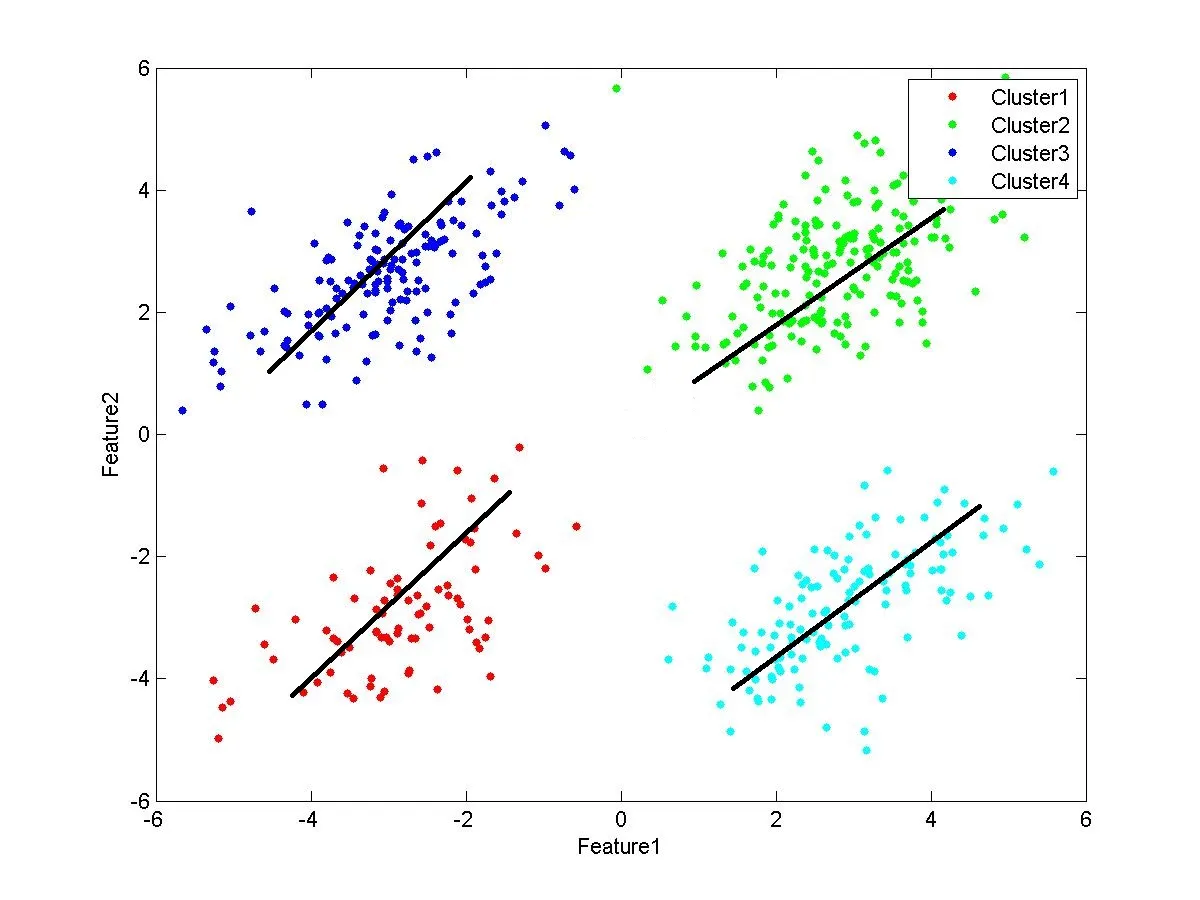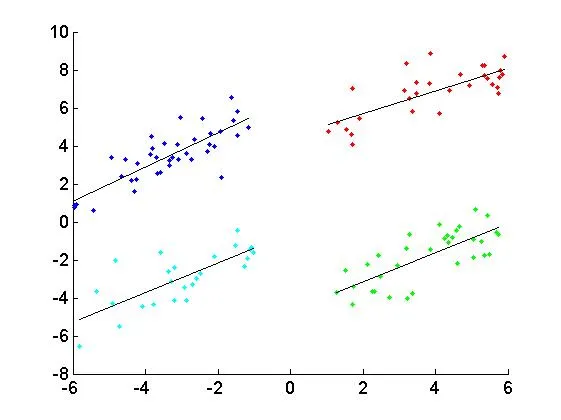我可以在Matlab中通过一组x,y点绘制回归线。但是,如果我有一个点簇(如下图所示),假设我有四个点簇,并且我想为它们绘制四条回归线...我该怎么办?所有点都保存在x、y中。没有办法将它们分开并放入四个不同的变量集中。
请参见下面的图像。忽略图例和标签。您有什么想法如何在Matlab中实现这一点?如果只有一个聚类,我可以做到。但是我想同时为所有四个聚类进行操作。 我现在在用于一个聚类的代码:
我现在在用于一个聚类的代码:
请参见下面的图像。忽略图例和标签。您有什么想法如何在Matlab中实现这一点?如果只有一个聚类,我可以做到。但是我想同时为所有四个聚类进行操作。
 我现在在用于一个聚类的代码:
我现在在用于一个聚类的代码: %----------- Linear regression -----------------
p= polyfit(x,y,1);
f= polyval(p,x);
%----------- Call R-square function ------------
r2=Rsquare(x,y,p);
%------------- Plot data -----------------------
figure()
plot(x,y,'*k');hold on
plot(x,f,'-r'); % show linear fit
xlabel('index');
ylabel('Intensity a.u.');
title('Test: Linear regreesion && R-square');
%------- Show y-data on current figure ---------
[row col]=size(y);
for i=1:col
str=num2str(y(i));
text(x(i),y(i),str,'Color',[0 0 1]);
end
%--Show linear equation on current figure -------
m1=num2str(p(1));c1=num2str(p(2));Rsquare1=num2str(r2(1));
text(1.05,80,['y= ',m1,'x+',c1,' , R^2= ',Rsquare1,'.'],'FontSize',10,'FontName','Times New Roman');
